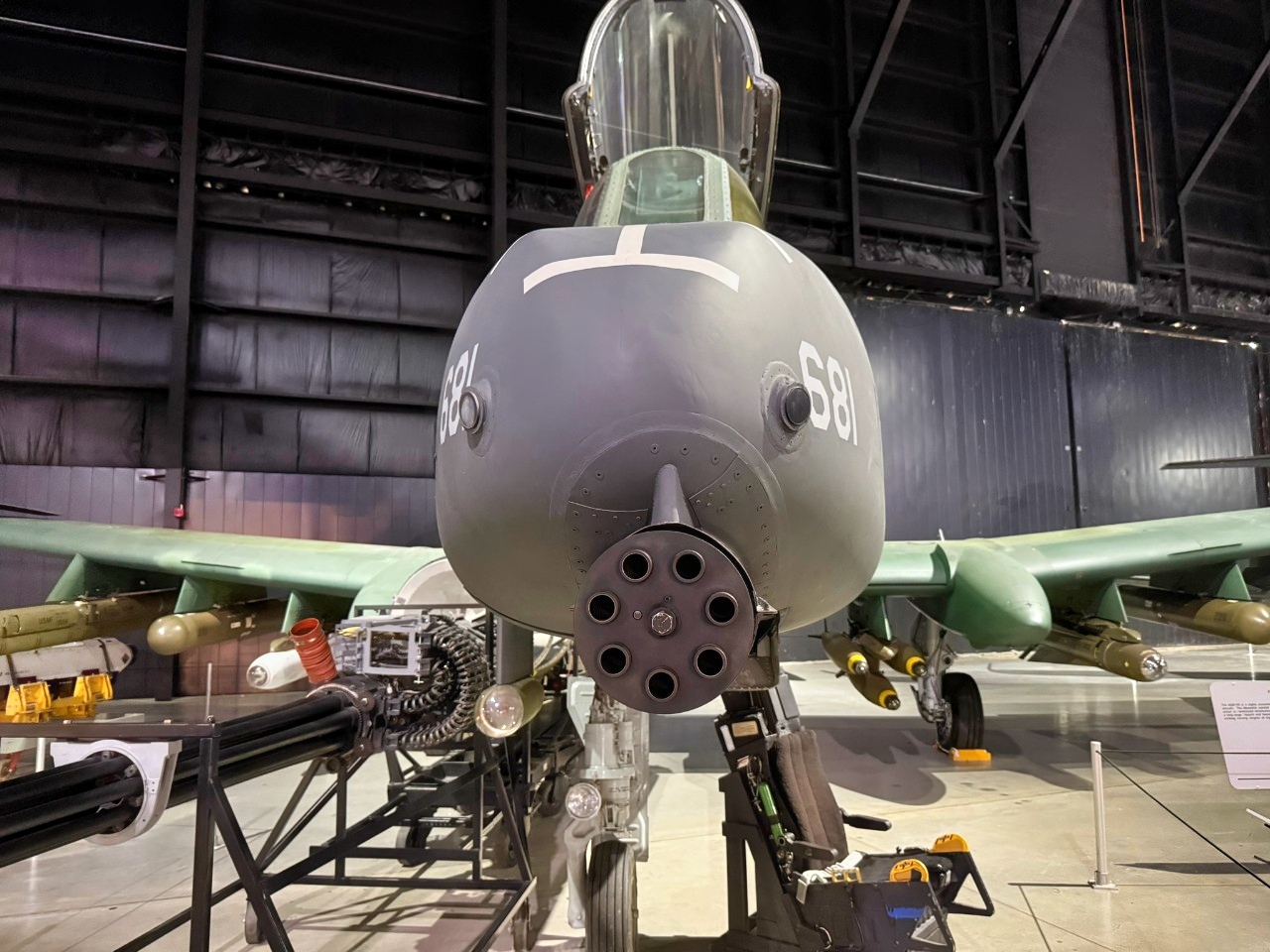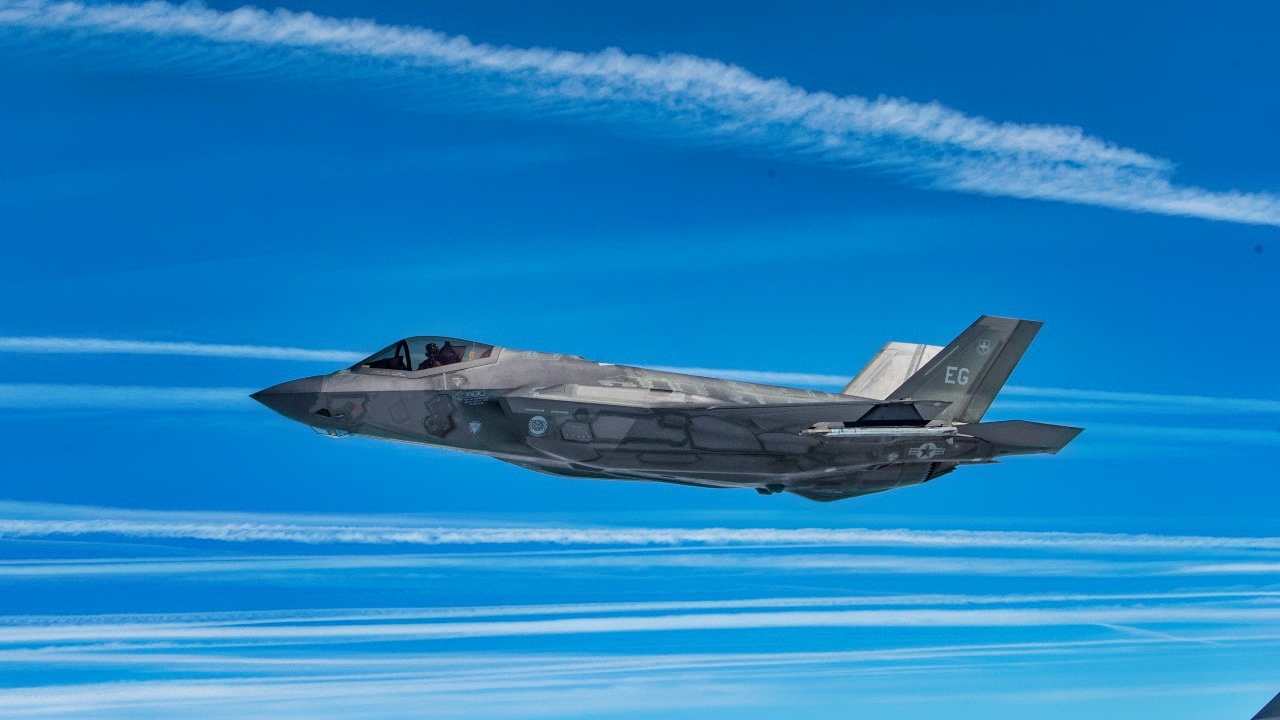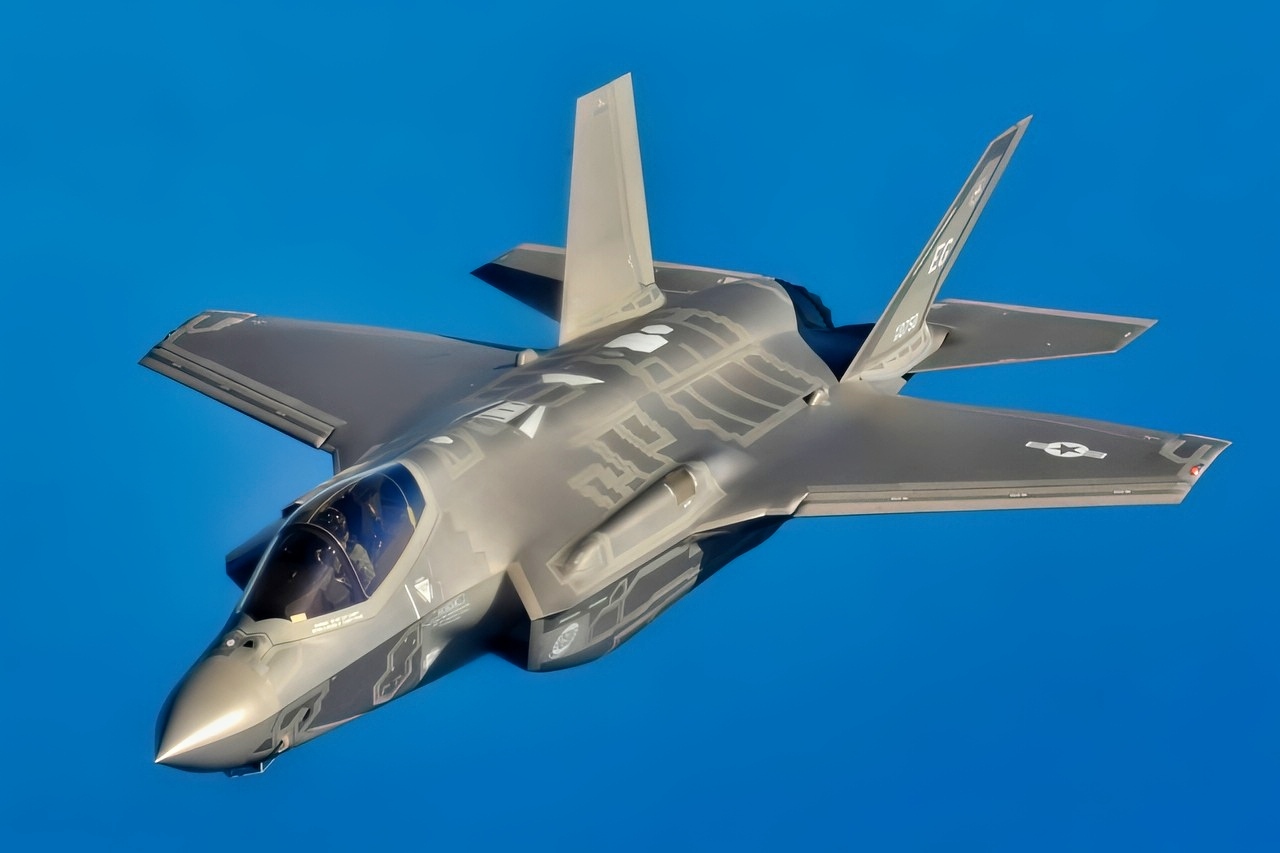Key Points and Summary – The A-10 Thunderbolt II was purpose-built for close air support: long loiter, armor, and a 30mm cannon to shred tanks.
-But in peer fights with dense, layered air defenses—like those seen over Ukraine—non-stealth jets struggle to survive near the front.

A-10 Warthog. Image Credit: Creative Commons.
-The F-35 can’t loiter like an A-10, yet its stealth, precision weapons, and powerful sensor-fusion let it find, fix, and pass targets while staying alive, teaming with drones, AC-130s, and helicopters for effects.
-Critics miss the A-10’s persistence, but the article argues survivability and networking matter more now—explaining why the Warthog is retiring as the F-35 takes the lead.
F-35 vs. A-10 Warthog: Time for The Answer
Though the multirole F-35 cannot perform the close air support mission as fluidly as the much older A-10 Thunderbolt II, its ability to perform a variety of other missions, combined with the A-10’s inability to survive for long against modern air defenses, gives the F-35 an edge.
The A-10 Thunderbolt II was designed from the outset for close air support, featuring a relatively slow speed with excellent low-speed handling, a wide payload capacity, and an integrated GAU-8/A Avenger 30mm cannon. The A-10 entered service during the Cold War, when it was believed that the United States, in conjunction with NATO forces, would be responsible for countering a massive armored advance by Eastern Bloc forces westward into then-West Germany and possibly elsewhere.
To that end, the A-10 would have destroyed tanks and other armored vehicles to blunt a Soviet offensive. The A-10 was also heavily armored; pilots sat inside a kind of titanium armor plating within the cockpit that could resist a variety of fire. Its 30mm cannon can destroy or disable virtually all armored vehicles it could expect to encounter. But despite these qualities, the sun is setting on that jet in favor of a much newer, stealthier fighter jet.

A-10 Warthog NSJ Photos. Image taken on 7/20/2025.

A-10 Warthog National Security Journal Photo Essay Picture.

A-10 Warthog Cannon NSJ Photo. Taken at U.S. Air Force Museum on 7/19/2025.

A-10 Warthog National Security Journal Photo.
In stark contrast to the A-10 is the F-35, an exquisite fifth-generation fighter. The multirole stealth jet lacks the armored protection of the A-10, as well as the A-10’s integrated cannon, and cannot loiter on-station for as long as that older aircraft.
The US Air Force argues that the F-35 and other platforms, such as armed but unmanned drones and larger platforms like the AC-130 gunship and attack helicopters, are able to provide close air support in lieu of the A-10. However, critics would argue that none of these platforms provides the same persistent support as the A-10.
Perhaps one of the more relevant questions regarding the A-10, alongside its ability to perform close air support, is that platform’s likelihood of survival against a robust, persistent, modern aerial threat.
The A-10’s involvement in America’s wars in the Middle East played toward that platform’s strengths. Long loiter times combined with the A-10’s diverse weapon suite allowed A-10 pilots to respond at a moment’s notice and deliver payload in support of ground forces. Still, it was so effective in large part because it did not face a dedicated threat from the ground or in the air. The A-10’s presence on the battlefield also had a potent psychological effect, as its distinctive burp sound following a 30mm cannon burst was unmistakable.
Unlike those non-state actors in Iraq and Afghanistan, however, a conflict with a peer or near-peer adversary would be defined by intensely contested aerial environments. The ongoing war in Ukraine provides a potentially useful scenario for examination. In that conflict, both Russian and Ukrainian air defenses are incredibly robust, and the skies above the front line are arguably some of the most hotly contested right now in the world. Indeed, both sides are unable to find purchase for leveraging their own aircraft. Instead, both sides opt for launching munitions from the air at targets on the ground many kilometers distant.

U.S. Air Force F-35 Lightening II with Eglin Air Force Base, Florida flies off the wing of a KC-135 Stratotanker with MacDill Air Force Base, Florida on December 16, 2021. The F-35 is the U.S. Air Force’s fifth-generation fighter and will replace the F-16 Fighting Falcon and the A-10 Thunderbolt II. (U.S. Air Force photo by Staff Sgt. Tiffany A. Emery)
In a similar situation, A-10 pilots would likely be forced to do the same. And given that Cold War-era jets lack stealth characteristics, it would be unlikely to survive for very long in hotly contested skies. A robust and layered series of air defenses would render the A-10’s combat effectiveness vulnerable.
And while an imperfect answer to the close air support question, the F-35 can nonetheless carry a variety of precision munitions. But one of the F-35’s real strengths, especially compared to the A-10, is its networked ability.
The F-35 is not just a fighter jet, it is also an informational node, a small part of a wider informational network that can scoop up information and relay that data onward to other aircraft — both other F-35s and to other aircraft — as well as to assets on the ground, providing a fuller, more complete, and timely picture of the the battlefield. The A-10 is simply not equipped to provide the same depth of informational overwatch. It is for these reasons that the A-10 Thunderbolt II will eventually leave service — this despite its unparalleled ability to support troops on the ground.
The F-35 Will Be Good Enough…and Stealth…
While the F-35 can’t necessarily replace the A-10’s persistent, dedicated overhead close air support coverage, the F-35’s multirole nature is a valuable asset and gives the F-35 much greater operational flexibility.
In contrast, the A-10 has essentially just one mission it can perform, making it a rigid combat aircraft—and one that would be unlikely to survive the rigors of modern aerial warfare against an opponent with concerted, credible air defenses.
Given the difficulty the A-10 would have to survive, it is not altogether surprising that the platform is on the way out.
About the Author: Caleb Larson
Caleb Larson is an American multiformat journalist based in Berlin, Germany. His work covers the intersection of conflict and society, focusing on American foreign policy and European security. He has reported from Germany, Russia, and the United States. Most recently, he covered the war in Ukraine, reporting extensively on the war’s shifting battle lines from Donbas and writing on the war’s civilian and humanitarian toll. Previously, he worked as a Defense Reporter for POLITICO Europe. You can follow his latest work on X.
More Military
Canada and the F-35: Why This Debate Needs to End
China’s New H-20 Stealth Bomber: Is It Coming Soon?
SR-72 Mach 6 Mistake the Air Force Needs to End










